By Niccolò Bianchi, Mira Hämäläinen, Linnea Karsikas, Elina Kilkki, Cameron Marshall & Harry Retief
The authors are students of Global Development Studies at the University of Helsinki
Odesa (Оде́са in Ukrainian) is a port city in Southern Ukraine, situated by the shores of the Black Sea. With around one million habitants, it is the third largest city in Ukraine, on top of having the largest seaport in Ukraine and one of the largest in the Black Sea. Due to its size and critical trading port, Odesa’s economic, political, and cultural significance cannot be understated.
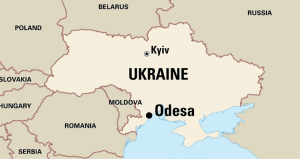
Figure 1 – Map showing the location of Odesa, in Ukraine
In this post, we will undertake an in-depth analysis of Odesa, focusing on the factors contributing to its strategic importance on the national and regional levels. Our research aims to provide a comprehensive understanding of the main drivers behind the city’s prominence, taking into account its historical development, geopolitical position, and socio-economic dynamics. By delving into these aspects, we hope to shed light on the complex interplay of factors that have shaped Odesa’s trajectory and resulted in its current strategic importance, aggravated by the context of the Russo-Ukrainian conflict.
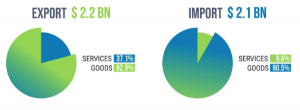
Figure 2 – Volume and share of imported and exported goods and services in the Odesa Region in 2019

Figure 3 – Main destinations of Odesa’s export
I. THE HISTORY OF ODESA
Odesa has had a long history under the rule of different peoples and empires as an important crossroad for the movement of people and goods. This history has contributed to Odesa’s intercultural and diverse nature. The current city of Odesastarted to form under Tatar rule when a fortress called Khadzhibey was built. After the Russian-Turkey war of 1787-1792, the city was renamed Odesa in 1794. Under Russian rule in the 19th century, Odesa grew rapidly in size and population and developed into a bustling trading hub while operating as a free port. During the Soviet era, Odesa experienced rapid industrialization and growth, becoming a vital center for maritime trade and shipbuilding. Despite facing challenges under strict centralized control, the city fostered a unique cultural identity, which endured and thrived throughout the period. After the collapse of the Soviet Union, Odesa continued to grow and maintained its importance in transportation, trading, and industry.
II. ODESA’S MODERN ECONOMIC STRUCTURE
The city’s harbor, arguably Odesa’s most relevant asset, has now become home to a Special Economic Zone called “Odesa Free Port,” created in 2000 with the aim of “investment attraction in priority industries of production for preserving existing and creations of new workplaces”. Due to the creation of the SEZ, paired with politics aimed at attracting foreign investors, the volume of foreign direct investments in the Odesa Region reached 1794,2 million USD in 2020. In terms of industry, heavy industries such as metalworking and machine building are the leading sectors, accounting for over one-third of the industrial output and having several of their key industries listed as “enterprises of strategic importance”. Agriculture is also an important sector in the areas surrounding Odesa: in 2012, it employed over 35% of the population and produced 40% of the GRP of the Odesa Region.

Figure 4 – Commodity structure of foreign trade in the Odesa Region in the first quarter of 2020, showing the importance of the food industry in the economy of the region.
Though employment in the informal and semi-formal economy has been under the national average in Odesa, in 2016, 8,3% of the population worked in the informal economy and 10,2% were informally employed in the formal sector. In 2016, Odesa was the only region where the reduction in informal employment was higher than the country average. One of the largest hubs of Odesa’s informal economy is the Seventh-kilometers market, established during Soviet rule and now one of the largest market complexes in Eastern Europe. While the number of official shops has increased in recent years, the majority are still individually owned small shops.
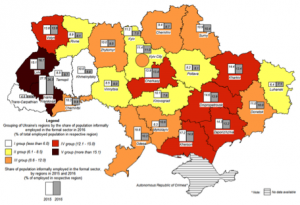

Figure 5a & 5b – Break-down of regions by informal employment in the formal sector (5a) and by employment in the informal sector as % of employed (5b) in 2015-2016
Furthermore, tourism is a significant industry in Odesa, as it is famous for its beaches and rich cultural history. However, tourism steadily decreased after Russia annexed Crimea and after the 2022 escalation in the war. In 2015, the number of tourists in the Odesa region had decreased by 11.58% since 2012 and in 2022, most hotels in the city reported occupancy of only 15-20%.
III. ODESA’S KEY ROLE IN THE NATIONAL AND REGIONAL TRANSPORTATION NETWORK
As a transportation hub, Odesa is heavily reliant on resources extracted elsewhere in the country. The port complex contains an oil and gas transfer and storage facility able to handle over 25 million tons of crude oil and oil products per year, which makes it Ukraine’s largest oil harbor and one of the largest in Europe. It also handles over 34.5 million tons of cargo and up to 4 million passengers every year, making it the busiest international port in Ukraine and a crucial hub in the region’s economic network. Its importance is highlighted by the fact that up to 70% of Ukraine’s imports and exports are carried by sea, and of that 65% move through the Port of Odesa. Furthermore, several important oil and gas pipelines run through the Odesa region. One of these is the Odesa-Brody pipeline, through which Ukraine can transport non-Russian oil to the rest of Europe, something that Russia has been strongly opposed to.
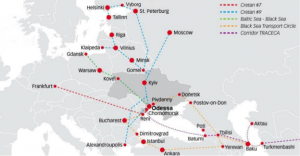
Figure 6 – International transport corridors passing through Odesa.
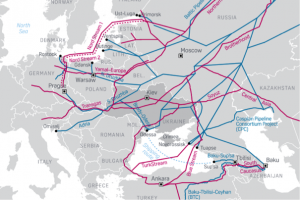
Figure 7 – Main gas (in red) and oil (in blue) pipelines transiting through Ukraine, including the Odesa-Brody pipeline
IV. URBAN CHALLENGES IN MODERN ODESA
Over the last decades, Odesa has faced (and is still facing) several urban challenges. For example, housing in Odesa has been among the most expensive in Ukraine and the public transportation infrastructure is out-of-date and insufficient. The eradication of urban intersectional inequalities and ‘glocal’ social stratification should be in the centre of any successful solutions to these and other urban issues in Odesa. To be able to provide sustainable urban transport and housing that is just in a social and spatial sense, it would be vital to secure domestic, public funding. One way to achieve this would be by collectivizing socially created rent that has been privately appropriated.

Figure 8 – Production, export, and import of Ukrainian wheat in 2020, highlighting Ukraine’s role as a critical grain exporter to the world
V. THE EFFECTS OF THE RUSSO-UKRAINIAN CONFLICT ON ODESA
After years of escalating tensions, on the 24th of February 2022, Russia launched a full-scale attack on Ukraine. Even though Odesa is not on the frontlines, it has suffered bombings and attacks on its naval bases. The war has also altered the role of the city in the region and has had devastating effects on the population, infrastructure, and industry. Due to Odesa’s location and its strategic importance, its invasion would destabilize the region and open other countries in the region, such as Moldova, for invasion. Furthermore, the main base of the Ukrainian Navy is in Odesa. This links Odesa, with its pipelines and port, to the theory, proposed by some scholars, which portrays Russia’s war on Ukraine as being partly due to the competition Ukraine’s pipelines and energy reserves pose for Russia’s domination in energy exports to Europe. Therefore, some conceptualize Russia’s attacks in a framework of resource dependency.
Others contest the resource war framework as an easy and too logical of an explanation for the irrational actions of Russia. Furthermore, Russia wastes its own natural resources in the war and destroys Ukraine’s resources. Instead, some see the war as having the objective to destroy Ukrainian (resource) cities, such as Odesa. On a more profound level, the war can be seen as a deliberate attempt to destroy Ukrainian national identity.
As Ukraine is one of the biggest producers of grain in the world, Odesa’s role as the most important port for grain shipments has become very visible during the war. Pre-war Ukraine exported 15% of the world’s corn and 10% of its cereals, meaning the Russian naval blockade hit the economy of port cities such as Odesa hard. The blockade also affects the nearly 400 million people around the world that are dependent on Ukraine’s grain exports. The Black Sea Grain Initiative between Russia and Ukraine permits grain shipments from the ports of Odesa, Chornomorsk and Pivdennyi. The deal was extended on 18.3.2023 for at least 60 days. This demonstrates how Odesa has continued to play a significant role during the war, due to its location, port, and other strategic enterprises.
Protecting resource cities like Odesa, in the end, goes beyond safeguarding national interests. It becomes a critical responsibility to ensure the stability and resilience of global food systems. By preserving and defending these cities, we can help maintain a steady flow of essential resources to meet the needs of not only the local population but also the interconnected network of countries around the world.
